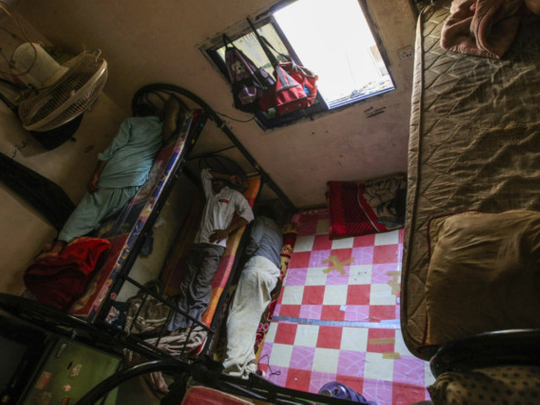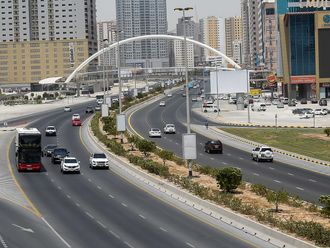
Dubai: It’s bizarre but shocking — an increasing number of expatriate workers are falling from bunk beds, resulting in grave injuries, even death, according to an NGO.
Joseph Bobby, Vice-President of Valley of Love (VoL), told XPRESS that a 29-year-old Pakistani worker, who suffered a serious injury when he fell from the third tier of a bunk bed last month, is the latest of several such cases that have come to the NGO for help.
Mohammad Hanif was sound asleep on December 19 when he fell from the third tier of a makeshift bed in his Al Quoz labour camp. The painter suffered a crippling injury to his spinal cord and is being treated at a Dubai hospital.
“Another Indian worker from Kerala who fell from his bunk bed in a shared room in Satwa succumbed to his spinal injuries, leaving behind his wife and three-year-old daughter. We sent the body home and were in touch with the family to extend support,” said Bobby.
Many cases
Pam Gauri, VoL’s hospital coordinator, said: “We don’t know how many cases exist out there as many go unreported. But I can say we’ve been involved with at least 10 cases from one hospital alone.”
Though there is no official data available in the UAE, a study in the US has estimated that an average of 36,000 bunk-bed related injuries occur annually there. It said the most common bunk bed-related injuries include lacerations, contusions, abrasions and fractures, requiring hospitalisation. The areas most frequently injured include the head, neck and face.
In the UAE too, Bobby said most of the injuries he has come across are in the neck. He said the falls usually occur in shared accommodations at labour camps and villas where workers sometimes convert two-tier bunk beds into three tiers to save space and rent.
An Indian worker who was drunk and fell while getting to his second-tier bed, another Indian who rolled over in his sleep in a Naif villa, a Pakistani worker who similarly fell in a Sonapur room while reaching for a blanket that slipped, a fellow Pakistani whose bed just gave way — there are many such instances observed in the last four years, said Bobby. All of them involved severe injuries, with patients being crippled for life.
According to Gauri, “The standard bunk beds are 5 feet high, 6 feet long and 3 feet wide. But most workers are heavily-built. To top that, they extend the height of the bed sometimes by adding another tier. They also hang luggage and their clothes, all of which compromises safety.”
The case of Pakistani painter Hanif was no exception. He told XPRESS: “I had a long day and went to sleep as usual on the top-most level of a three-tier bed. We have six beds in our room and each bunk bed has two levels. But we created another level in our bed by extending its height with pipes just so that we could add another mattress below. It is not allowed, but we did it because we could split the rent by three.
“I was sleeping like this for two-and-a-half years and nothing happened.”
But December 19 proved different and Hanif found himself crashing down when he was in deep sleep. “I just tumbled and hit my head hard on the floor.
“I can’t believe that I cannot walk or move anymore. I was so happy earlier as I earned Dh1,200 a month. With that, I could ease my aged parents’ burden, get my two sisters married and give a good life to my two daughters who are four and two. Now I don’t know how we will manage.”
According to Build Safe UAE’s best practice guidelines for labour camps, adequate space should be provided to workers to prevent overcrowding in accordance with local laws, with six to eight people per room at the maximum. Four is preferred where practical.
Restrictions per room
The number of people per square metre should also be reviewed in keeping with regulations. Beds should be spaced apart, raised off the floor with safe access provided. Triple-deck bunks should not be used due to risk of falls.
Bobby said workers compromise on safety without the knowledge of authorities.
“Who is to blame in such cases? When something goes wrong, little help comes forth. At best, companies will give an air ticket back home. Stringent checks must be conducted on shared accommodations to prevent such incidents.”
How to Prevent Bunk Bed Falls
• Make sure guardrails are used on both sides of the upper bunk. Gaps recommended are 3.5 inches or less to prevent entrapment and strangulation
• Secure mattress foundation by using the right size
• Remove hazardous objects from the bed
• Do not place the bunk bed too close to ceiling fans or other fixtures
• Do not tamper with shape or size of the beds as they could compromise on safety












